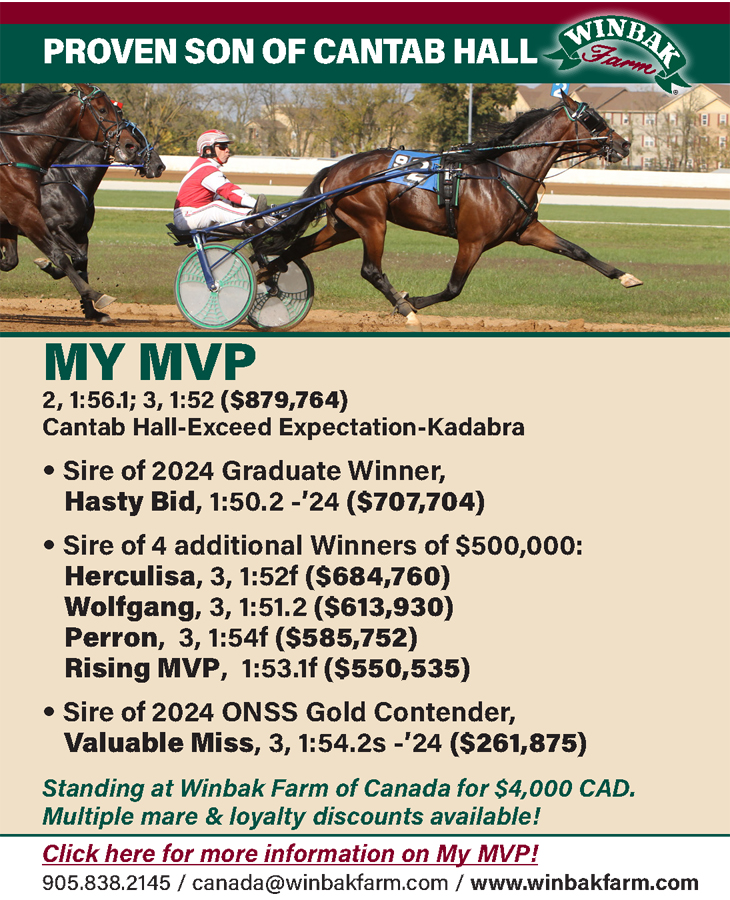
Monotony antidotes
by Trey Nosrac
Let us begin with a quote by Charlotte Bronte, “I feel monotony and death to be almost the same.”
The thrill of the yearling sales season is almost over. The luster of young horses racing is fading as the long racing winter looms. After a fantastic year for our sport, we soon face a portion of the year when even the heartiest fan finds familiar trotters and pacers going in endless circles on cold and gloomy days. Even the gamblers feel lethargic. The winter blues can set in.
In the best of times, our racing product, which is so fascinating to those in the tribe, is monotonous to most human beings. In the worst of times, even those in the tribe must admit that a prohibitive favorite driven by a top driver, leaving from a favorable post position romping by nine lengths on a sleet-filled weekday, is neither a fun wager nor a riveting sporting event. We must continue in ways large and small to stir the pot and add more drama and chance to our races.
“Blah, Blah, Blah. How?” you say. Yes, I heard you say it.
Allow two specific proposals to relieve the monotony.
Visiting professional drivers from other states could give the races a new look. Goodness knows we love our familiar drivers. They are amazingly talented, personable, and work hard. After competing against each other for decades, our top-tier drivers are more familiar with each other than blood relatives. Several are blood relatives. Our drivers are not the problem, we know they are great, and we have watched the top twenty drivers about a million times. Ask yourself these questions:
When was the last time you watched a harness race and noticed a driver whose name and colors you did not recognize?
Do you think giving a trio of drivers from Michigan for a week of drives at your favorite racetrack would spice up the week?
If a race program came out and had THREE drivers in each race replacing names you are familiar with in the sulky, would the races be a touch more interesting and unpredictable?
The concept is simple, get some new faces in front of the audience, and add a little additional mystery. You can fill in the blanks of who, how many drivers, how often, what horses, what state racetracks, equitable bumping, coordinate scheduled holidays to give regular drivers planned holiday weeks, etc.
Another idea is the two-slot shuffle. It goes like this. A minute before the horses step onto the track for the post-parade, there will be a public drawing for two horse numbers in the upcoming race, followed by an announcement of the horses drawn and their corresponding numbers. For example, imagine the numbers drawn are 2 and 8. Those two horses and drivers will retain their number in the program but swap slots behind the starting gate. The clock is ticking for gamblers. Do you want to change your selections for this race?
What are some purposes of such madness?
Interactivity – Gamblers will be on their toes and actively involved in frantic last-minute wagering and re-wagering when faced with a different post position. This last-minute twist forces gamblers and casual players to pay attention and do something before the gate swings open.
Emotion – Players will be thrilled or deflated, rescued from a bad post, or condemned to a worse position. Emotion is an excellent ingredient to create more interest.
Agility – Gamblers need to be on their toes and quickly arrange and wager for the new starting positions. Drivers will need to prepare a new game plan.
Drama – The time before the post-parade will find participants anxiously awaiting to see if they are in the two-horse shuffle.
Again, this is the prototype of a flexible, straightforward plan with a thousand iterations.
Now we reach the point of any suggestion where hardcore handicappers, owners, and top drivers who will occasionally be affected or unseated will begin the griping and grieving. The racing connections of the two horse that now has post position eight will be furious. When his favorite driver gets shuffled at the last moment, trainers or wealthy owners will be livid
They may be giving up something with no reward. Or on the other hand, they could view the crazy experiments as attempts to create tiny cracks in the wall of monotony.
Let us close with another quote by Edith Wharton, “Monotony is the mother of deadly sins.”













